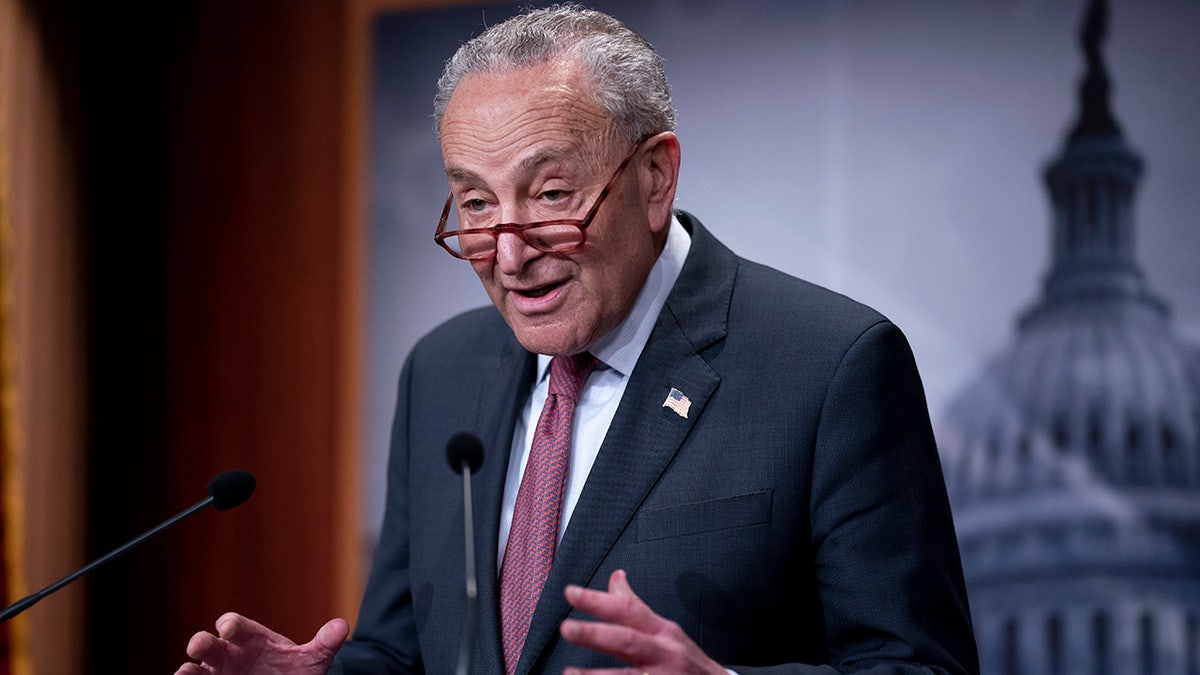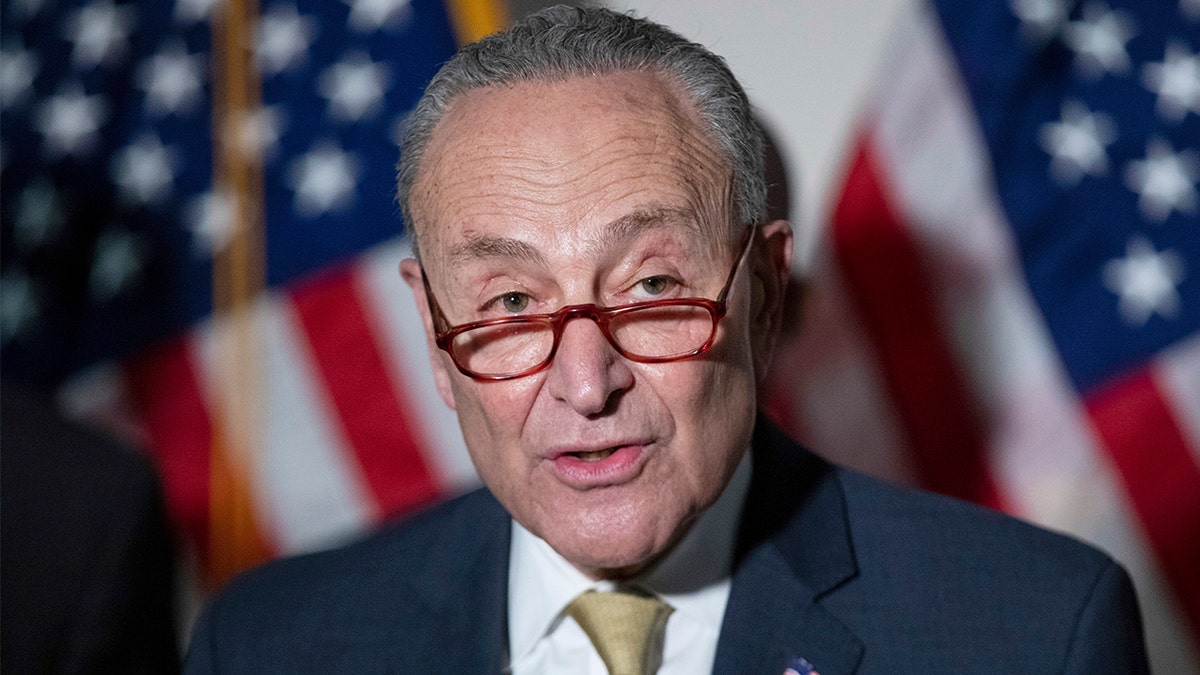Senators from both sides are apoplectic at Sen. Tommy Tuberville (R-Ala.) and his blockade of more than 400 routine military promotions. Tuberville is blocking the promotions in protest of the military’s abortion policy.
Democrats run the Senate. But they did little to break the impasse. Senate Majority Leader Chuck Schumer (D-N.Y.) never scheduled a few extra days here and there to confirm some of the most important nominees quickly. Democrats frankly relished the politics of the deadlock, pointing to Tuberville as an obstructionist who put the nation’s national security at risk and undercut the military’s esprit de corps.
Meantime, some Republicans are fuming at the lengths Tuberville is willing to go to block these promotions.
The Senate confirmed three key military promotions Thursday. But there are still more than 400 promotions twisting in the wind.
REPUBLICANS BLAST GOP SEN TUBERVILLE OVER OBJECTION TO MILITARY PROMOTIONS
So, a coalition of Democrats and Republicans are pondering a parliamentary gambit to go around Tuberville and confirm the promotions relatively quickly.
Other outlets have reported this maneuver as a “rule change” or a “new precedent” for the Senate. Some have likened this step to the Senate’s “nuclear option.” That’s where the Senate lowered the threshold to break a filibuster on all cabinet and judicial nominees (except for the Supreme Court) to a simple majority in 2013. The Senate then executed “Nuclear Option II,” dropping the threshold to a simple majority to break a filibuster for SCOTUS nominees.
The procedure senators are discussing is none of these things. It’s essentially a method to bypass Tuberville’s blockade by using a Senate “standing order.”
The Senate uses “standing orders” in the same fashion as it relies on its “standing rules” and precedents to govern proceedings. Adoption of a Standing Order is just a way for the Senate to implement a guideline to handle a particular procedure. For instance, the Senate used a “standing order” to create the Homeland Security Committee after 9/11.
(Bill Clark/CQ-Roll Call, Inc via Getty Images)
In this case, the Senate wants to adopt a standing order to expedite the confirmation of a large batch of military promotions. Such a move would prevent the Senate from having to consider each nomination individually, sucking up profuse amounts of floor and voting time.
The essence of the standing order is that it would allow the Senate – at the end of the process – to confirm all nominees “en bloc.” In other words, the Senate would confirm a given cohort of nominees in one fell swoop. The Senate can sometimes approve a slate of nominees all at once via unanimous consent. But there’s a problem with that. Ninety-nine senators could be in favor of confirming the entire slate. But all it takes is a single objection and the Senate is stuck. That’s what Tuberville has done of late.
The Senate has confirmed a few nominees over the past two months by running the parliamentary traps on each one individually. But that consumes a lot of time. That’s why the Senate prefers to confirm a swath of non-controversial nominees all at once. The Senate sometimes considers more controversial nominees individually if there isn’t broad support for confirmation.
Here’s how it would work in this case:
HOUSE READIES TO BATTLE OVER DISCIPLINING GREENE AND TLAIB, AND EXPELLING SANTOS
Schumer would bring the standing order resolution to the floor to consider a group of stalled military promotions. The Senate must first get onto the resolution. So Schumer must likely file cloture to break a filibuster on the motion to proceed. If Schumer presents the standing order resolution and files “cloture” to crack the filibuster on a Monday, the Senate would then vote to “invoke cloture” (end debate) on the motion to proceed on Wednesday. By rule, any cloture petition must have an intervening day before it ripens for consideration (Tuesday). So the Senate would vote on “proceeding” to the standing order resolution on Wednesday. This requires 60 yeas.
If the Senate “invokes cloture” on the motion to proceed on a Wednesday, it likely may start debate on the standing order resolution on Thursday.
At that point, Schumer must file cloture to end debate and break a filibuster on the standing order resolution itself.
So, he must file ANOTHER cloture petition to end THAT filibuster. Schumer would likely do that on this hypothetical Thursday in order to save time.

Senate Majority Leader Chuck Schumer, D-N.Y. (AP Photo/J. Scott Applewhite)
By the book, the cloture petition to end all debate on the standing order resolution requires an intervening day. So that would not ripen until Saturday. If the Senate gets 60 votes to crack the filibuster, the Senate can then move to adopt the actual standing order itself. That would require a simple majority and perhaps come on Sunday.
But wait, there’s more.
CLAIM THAT SPEAKER JOHNSON LIVES PAYCHECK TO PAYCHECK MAKES HIM RELATABLE, SAY DEFENDERS
All this procedure has done is put in place a mechanism by which the Senate can quickly confirm the nominees in question.
The Senate must first proceed to the slate of nominations. What Schumer must do then is file ANOTHER cloture petition to bring to a close debate on all of those nominees at once. So if Schumer does this on Sunday, the Senate can vote to end debate on the following Tuesday (Monday serves as the intervening day). But because these are NOMINEES, the Senate only needs a simple majority to end debate on that slate.
So the Senate finishes debate on Tuesday.

(AP Photo/Amanda Andrade-Rhoades)
Actual, simultaneous confirmation of the large batch of nominees finally comes on Wednesday. Adoption of the measure to confirm the promotions en bloc also needs a simple majority.
CLICK HERE TO GET THE FOX NEWS APP
So, this process probably chews up nine days of Senate time (including the weekend). But it does confirm the promotions of the nominees. And despite the time, this is all relatively quick compared to the lengthy process of doing each nominee one-by-one.
Moreover, Tuberville cannot block this gambit. He can delay it by forcing the Senate to jump through three hoops of cloture to break a filibuster. But if the Senate has a determined supermajority, this can overcome Tuberville’s holds and confirm these promotions.